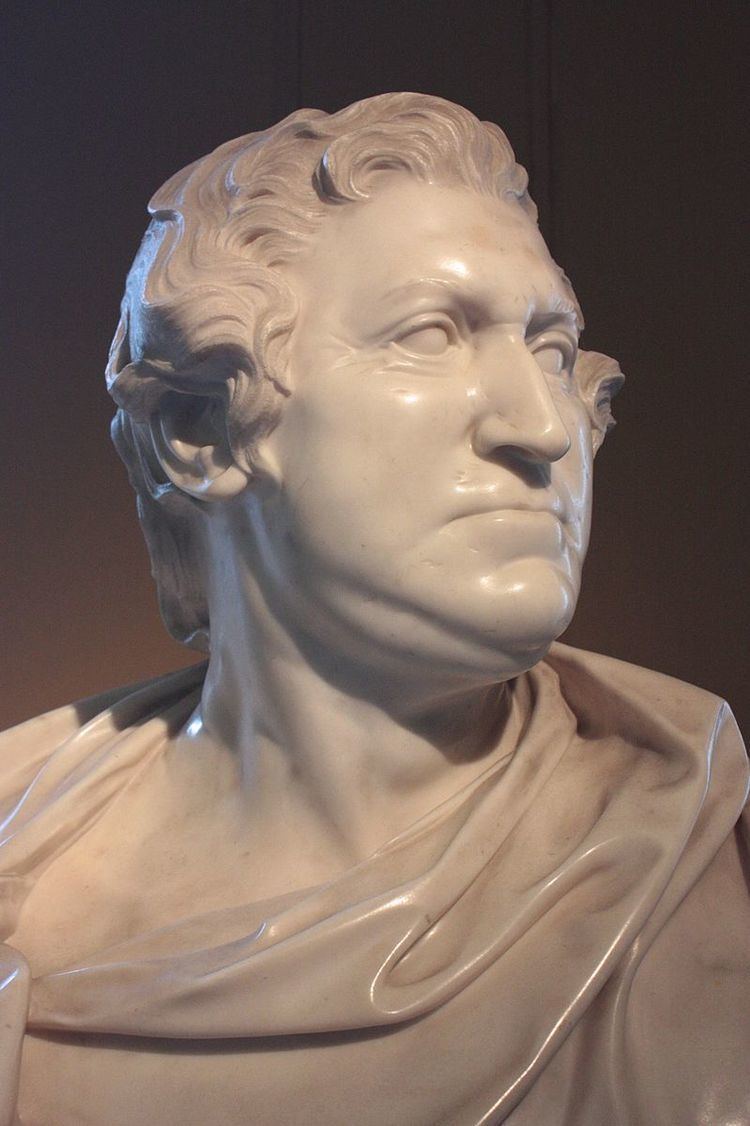Name Henry 9th | Died January 9, 1750 | |
 | ||
Parents Thomas Herbert, 8th Earl of Pembroke Children Henry Herbert, 10th Earl of Pembroke Grandparents Philip Herbert, 5th Earl of Pembroke Uncles Philip Herbert, 7th Earl of Pembroke, William Herbert, 6th Earl of Pembroke | ||
Lt.-Gen. Henry Herbert, 9th Earl of Pembroke, 6th Earl of Montgomery PC FRS (29 January 1693 – 9 January 1749) was the heir and eldest son of Thomas Herbert (c. 1656 – 1733) and his first wife Margaret. He was styled Lord Herbert from birth until he inherited his father's earldoms of Pembroke and Montgomery in 1733.
Contents
Life
Studying at Christ Church, Oxford up to 1705 in a milieu of classicist architecture (its dean, Henry Aldrich, was then at work on his Elementa architecturae and on overseeing construction of the Peckwater quadrangle, Palladian before Palladianism was popular in England) he went on a grand tour in 1712 (meeting Lord Shaftesbury in Naples, William Kent in Rome, and also going to Venice).
He was appointed lord of the bedchamber to George II during his time as the prince of Wales. He was made a deputy lieutenant of Worcestershire on 29 January 1715, and was commissioned captain & lieutenant-colonel in the Coldstream Guards on 12 August 1717. On 20 September 1721, he was promoted to the rank of colonel, and made captain & colonel of the 1st Troop of Horse Guards.
Upon the accession of George II in 1727, Herbert remained his close associate, and was made first lord of the bedchamber. After acceding to the earldom on 9 January 1733, Pembroke left the Horse Guards and was appointed colonel of The King's Own Regiment of Horse (22 June 1733). Later that year (24 August), he was appointed Lord Lieutenant of Wiltshire. George II continued to favour Pembroke, who was appointed groom of the stole on 8 January 1735 and sworn a Privy Councillor the next day. However, he proved unsuccessful in his attempts to mediate between George and his son prince Frederick. Though he exercised powerful patronage in Wilton, his local constituency, Pembroke played only a slight role in national politics.
He shared his father's antiquarian tastes (commissioning Andrew Fountaine to supervise the cataloguing of his father's collections), but expressed them through architecture rather than collecting. He is known to have designed seven buildings, two of which are no longer standing, these are the Earl's own house, Pembroke House, Whitehall of 1717, demolished 1756-7 and Wimbledon House 1732-3, Surrey for the Duchess of Marlborough, burnt down in 1785. Opinions of his talents in that area were mixed – Horace Walpole stated that "no man had a purer taste in building" but Sarah, duchess of Marlborough wrote that the Earl's talent was little more than to "imitate ill whatever was useless" in Inigo Jones and Palladio's buildings Although he designed the Column of Victory at Blenheim Palace erect 1727–30 for the Duchess of Marlborough as a memorial to her late husband. As one of the "architect earls", he collaborated with Roger Morris to design Marble Hill House (1724–29), the White Lodge, Richmond (1727–28), and the Palladian Bridge over the little River Nadder at Wilton House (1736/7). He also designed the water tower at Houghton Hall (c.1730) in the form of a garden temple, with a pedimented portico raised on a high rusticated base.
The mason William Townsend executed the Earl's design for the Column of Victory, at Blenheim Palace and the water tower at Houghton Hall. The Earl also inspected Townsend's design of Westcombe House, Blackheath, Kent (1727–28) and as well as parts of the design of Castle Hill, Devon (1729). He also redecorated a few of the rooms in the south front of Wilton House. Though he was uninvolved in its design, he also acted as an energetic promoter of the project to build Westminster Bridge, getting the relevant Act of Parliament through in 1738, laying the first stone in January 1739 (and the last stone of the main structure in 1747), attending 120 meetings of the bridge commissioners (the last on the morning of his death), and consistently supporting its designer Charles Labelye and his caisson design against long and fierce opposition (after the subsidence of one pier in 1747, The Downfall of Westminster Bridge, or, My Lord in the Suds mocked him for this support, but he was ultimately vindicated).
He enjoyed swimming, played tennis every day and generally remained continually active and healthy and (as seen in Roubiliac's portrait bust of him at Wilton) was strong and powerfully built and strong, but he seems to have developed asthma (Walpole mentions this in his detailed account of the Earl's death) and spent some weeks at Bath in winter 1743, during which he experienced breathing difficulties. Pembroke was promoted lieutenant-general on 18 February 1742, and became a Fellow of the Royal Society on 15 December 1743. During the king's trip to Hanover in 1748, he served as one of the Lords Justices. He died at Pembroke House in 1750.
Gallery of architectural works
Marriage and issue
He and Mary FitzWilliam (eldest daughter of Richard FitzWilliam, 5th Viscount FitzWilliam) married on 28 August 1733, and they only had one child, Henry, who inherited his father's earldoms. When the Fitzwilliam family died out in the male line in 1833, the Pembroke family inherited large estates in Dublin, and are still substantial landowners there.
